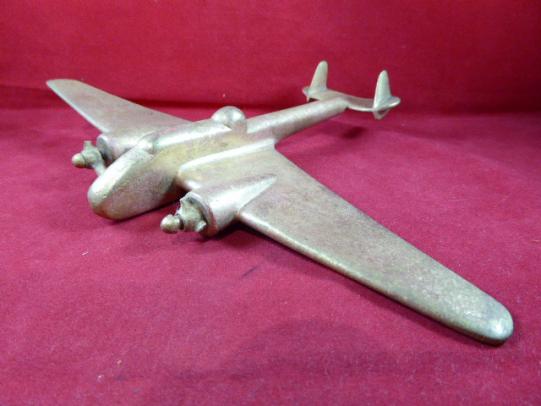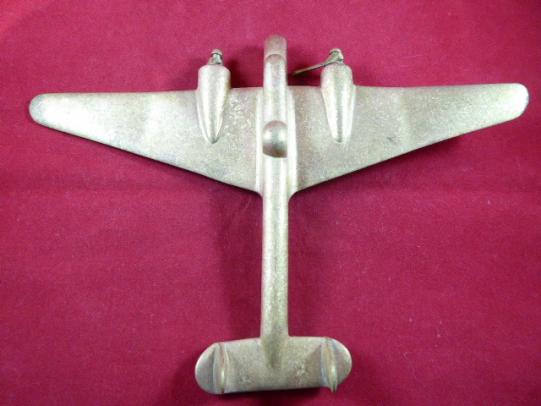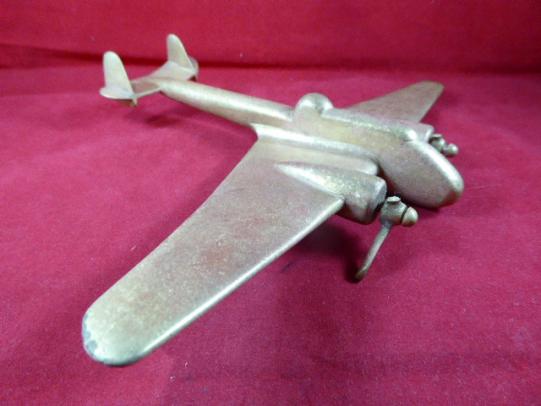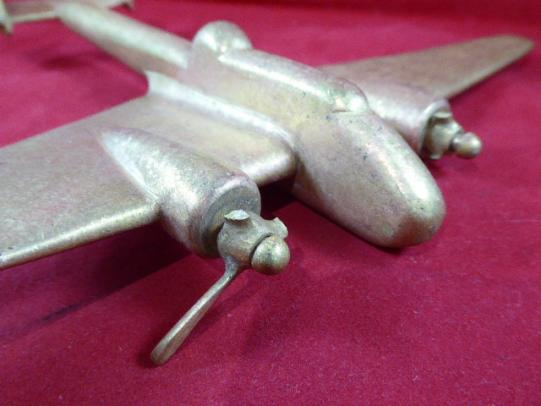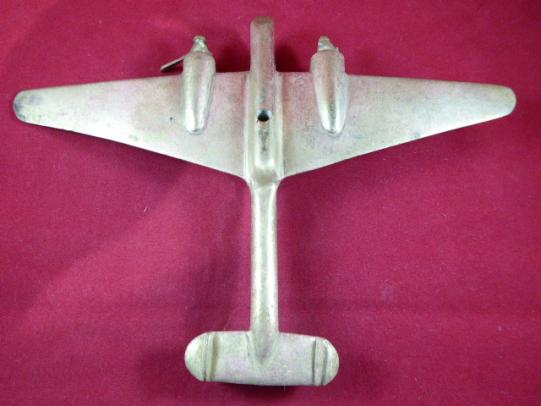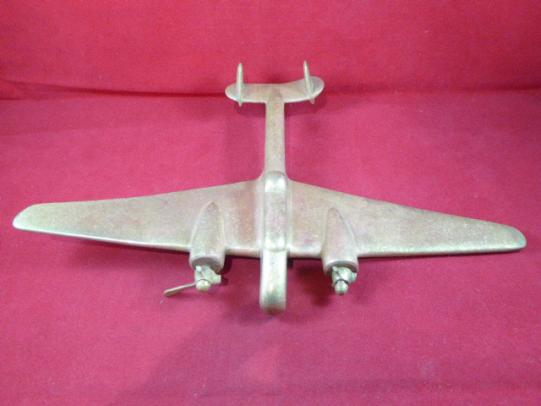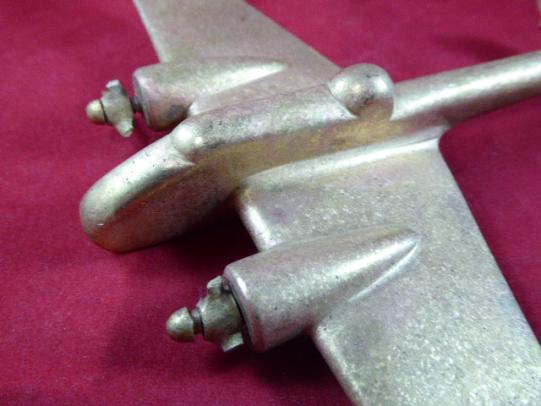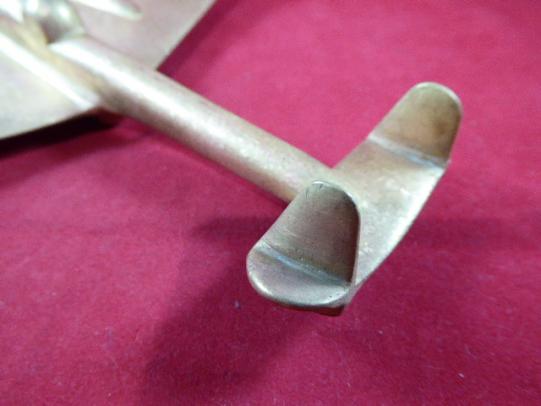Unusual WW2 Trench Art Brass Model of an RAF Handley Page HP52 Hampden
Here on offer is a rare and unusual example of a WW2 Trench Art brass model of a RAF Handley Page Hampden, twin engined medium bomber.
The model is a one piece solid brass casting and does show as expected, some age oxidisation to the finish, but no cracks or repairs.
Originally it would have had two ‘three bladed’ propellers, but now one engine has just the spinning boss remaining and the other only one blade left intact.
There is also a hole drilled in the bottom that allowed it to be fitted to a raised base.
The Handley Page HP52 Hampden was designed by Gustav Lachmann to meet Air Ministry Specification B9/32 for a twin-engined day bomber. A single HP2 prototype took to the air for the first time on 21st June 1936 and an initial order for 180 Mk1 Hampdens was placed shortly thereafter. The first production machine flew on 24th May 1938.
Powered by 2 x 980 hp Bristol Pegasus XVIII nine-cylinder radial engines, the Hampden was armed with a fixed .303 in Vickers K machine gun in the nose and one or two in each of the rear dorsal and ventral positions. It was capable of carrying 4,000 lb of bombs, mines or a single 18 in torpedo. The crew of four – pilot, navigator/bomb aimer, radio operator and rear gunner – were packed into such a cramped fuselage that the aircraft was designated the “Flying Suitcase”.
The Hampden entered RAF service with No 49 Squadron in September 1938 and a total of 226 aircraft had been supplied to eight squadrons by the outbreak of war a year later. After the start of hostilities, it proved so vulnerable to Luftwaffe fighters that it was switched from day to night operations and, along with the Whitley and Wellington, was at the forefront of the early bombing campaign against Germany, taking part in the first raid on Berlin in 1940 and the first 1,000 bomber raid on Cologne. With the advent of new heavy bombers,
it was retired from Bomber Command in late 1942 but continued to operate with Coastal Command as a long-range torpedo bomber and maritime reconnaissance aircraft until the end of 1943. It was in a similar role that Hampdens also equipped the Royal Australian Air Force and latterly the Soviet Navy. The aircraft was also operated by RAF meteorological flights and the air forces of Canada and New Zealand. A total of 1,430 Hampdens were built, of which 714 were lost on operations. No machines remain airworthy but two are currently being restored to static display condition – one at the Canadian Museum of Flight in British Columbia and the other at the RAF Museum, Cosford.
The model has a 9.25” (23.5cm) wingspan and is 6.5” (16.5cm) long.
It weighs a heavy 580g.
Please see my pictures for the details of the condition, which complement this description.
Please see my TERMS OF BUSINESS regarding Deliver Charges and Insurance regarding additional insurance cover, should you require it, BEFORE the item is dispatched.
The responsibility lies with the customer to check with your Customs restrictions that this item can be imported into your country.
Code: 50432
45.00 GBP


